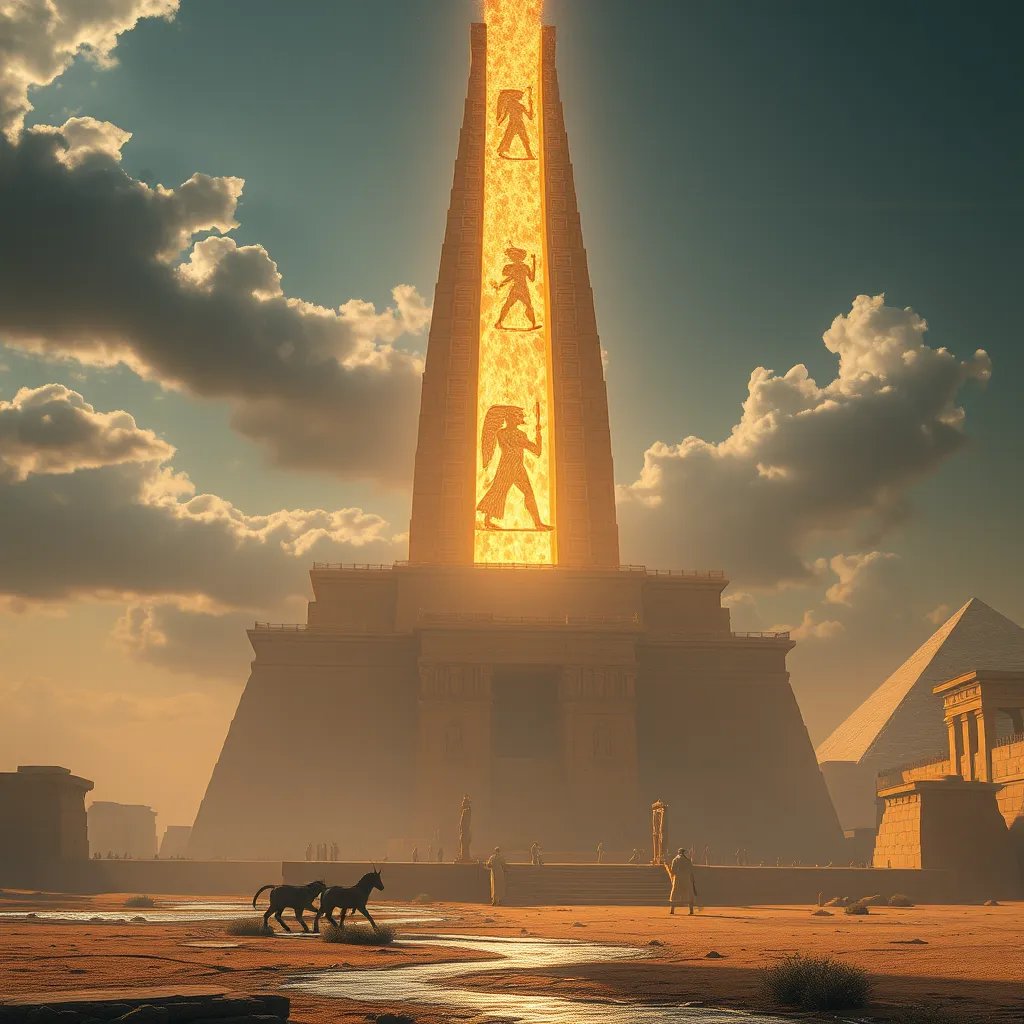Shadows of the Nile: The Duat Revealed
I. Introduction to the Duat
The Duat, often referred to as the Egyptian underworld, is a complex realm that embodies the ancient Egyptians’ beliefs about life after death. It is a place where the souls of the deceased journey to face their fate and continue their existence beyond the mortal realm. In ancient Egyptian belief, the Duat represents not only the final resting place of the soul but also the threshold between life and death.
In the context of Egyptian mythology, the duality of life and death is a central theme. The ancient Egyptians viewed life as a transient phase, and death was merely a transition to another form of existence. The Duat serves as a vital component in this cosmology, intertwining the concepts of life, death, rebirth, and the divine.
II. The Geography of the Duat
The landscape of the Duat is depicted as a vast and mysterious realm filled with various terrains that reflect both beauty and peril. Ancient texts describe it as a complex labyrinth of rivers, mountains, and deserts, often characterized by a stark duality in its nature. The Duat consists of several regions, each with its own unique attributes and symbolic meanings.
- The River of Night: A dark river that souls must cross, symbolizing the boundary between the living world and the realm of the dead.
- The Fields of Iaru: An idyllic paradise where souls who pass through trials successfully can find eternal peace.
- Enigmatic Creatures: The Duat is home to various mythical beings, such as the serpent Apophis, which represents chaos and destruction.
Within the Duat, symbolism plays a critical role. Water represents life and rebirth, while darkness signifies the unknown and the fear of death. Light, on the other hand, is associated with the divine and the hope for resurrection. This interplay of elements highlights the Egyptians’ complex understanding of existence.
III. The Journey of the Soul
The transition to the Duat begins at the moment of death. The soul, known as the “Ba,” separates from the body and embarks on a perilous journey through the afterlife. This journey is fraught with challenges and tests that the soul must navigate to achieve eternal life.
Key deities play essential roles in guiding the souls through the Duat:
- Anubis: The god of mummification and the afterlife, Anubis is depicted as a jackal and serves as the protector of graves. He guides souls to the Hall of Judgment.
- Osiris: The god of the afterlife and resurrection, Osiris presides over the judgment of souls, determining their fate based on their earthly deeds.
The journey culminates in the Hall of Judgment, where the soul’s worthiness is assessed.
IV. Trials and Judgments
One of the most significant events in the Duat is the Weighing of the Heart ceremony. In this process, the heart of the deceased is placed on one side of a scale, while the Feather of Ma’at, symbolizing truth and justice, is placed on the other.
If the heart is lighter than the feather, the soul is deemed pure and is allowed to enter the Fields of Iaru. Conversely, if the heart is heavier, it signifies a life filled with wrongdoing, resulting in the soul being devoured by the monster Ammit, thus facing eternal oblivion.
V. The Duat and Ancient Egyptian Art
The Duat has been a rich source of inspiration for ancient Egyptian art, with many tombs and temples adorned with intricate depictions of the afterlife journey. Artists used vivid imagery to convey the myths and beliefs surrounding the Duat, creating a visual representation of the spiritual journey.
Key artifacts that depict the journey through the Duat include:
- Funerary Texts: The Book of the Dead contains spells and illustrations meant to guide the deceased through the Duat.
- Wall Paintings: Tomb walls often feature scenes of the deceased interacting with deities and navigating the Duat.
These artistic representations serve as both a guide and a protective charm for the deceased, ensuring safe passage through the afterlife.
VI. The Influence of the Duat on Ancient Egyptian Culture
The Duat significantly impacted ancient Egyptian culture, shaping funerary practices and beliefs about the afterlife. The construction of elaborate tombs and the practice of mummification were directly influenced by the desire to honor the deceased and ensure their safe passage to the Duat.
Moreover, the Duat is represented in various literary and religious texts, emphasizing its importance in the spiritual life of the Egyptians. Myths surrounding Osiris and the journey through the Duat became central narratives that influenced religious practices and societal norms.
VII. Modern Interpretations and Discoveries
Archaeological findings related to the Duat have revealed much about ancient Egyptian beliefs and practices. Excavations of tombs have uncovered artifacts, texts, and art that provide insight into how the ancient Egyptians envisioned the afterlife.
In contemporary culture, the Duat continues to captivate the imagination. It has been referenced in literature, films, and art, highlighting the ongoing fascination with ancient Egyptian mythology. Scholars and enthusiasts alike explore the Duat to gain a deeper understanding of its significance and the worldview of the ancient Egyptians.
VIII. Conclusion: The Legacy of the Duat
The Duat remains a powerful symbol of the ancient Egyptians’ complex understanding of life, death, and the afterlife. Its intricate mythology and artistic representations offer valuable insights into the beliefs and practices of one of history’s most fascinating civilizations.
As we reflect on the legacy of the Duat, it is evident that this enigmatic realm continues to play a crucial role in our understanding of ancient Egyptian civilization. The Duat not only enriches our knowledge of their religious practices but also serves as a reminder of the universal human quest for meaning in the face of mortality.




